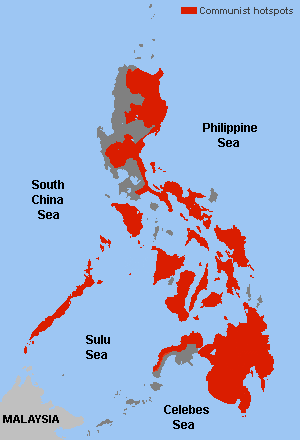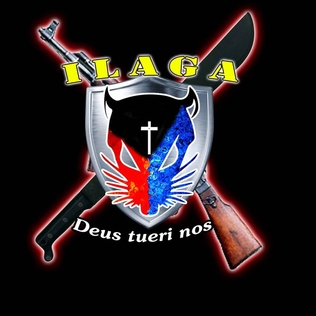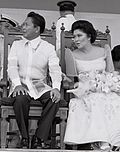
Mindanao is the second-largest island in the Philippines, after Luzon, and seventh-most populous island in the world. Located in the southern region of the archipelago, the island is part of an island group of the same name that also includes its adjacent islands, notably the Sulu Archipelago. According to the 2020 census, Mindanao has a population of 26,252,442 people, while the entire island group has an estimated population of 27,021,036 according to the 2021 census.

Zamboanga del Sur, officially the Province of Zamboanga del Sur, is a province in the Philippines located in the Zamboanga Peninsula region in Mindanao. Its capital is the city of Pagadian. Statistically grouped with Zamboanga del Sur is the highly urbanized City of Zamboanga, which is geographically separated and a chartered city and governed independently from the province.

Sultan Kudarat, officially the Province of Sultan Kudarat, is a province in the Philippines located in the Soccsksargen region in Mindanao. Its capital is Isulan and the commercial center is Tacurong.

Cotabato or North Cotabato, officially the Province of Cotabato, is a landlocked province in the Philippines located in the Soccsksargen region in Mindanao. Its capital is the city of Kidapawan. Some of its municipalities are under the jurisdiction of the nearby Bangsamoro Autonomous Region.

The Autonomous Region in Muslim Mindanao was an autonomous region of the Philippines, located in the Mindanao island group of the Philippines, that consisted of five predominantly Muslim provinces: Basilan, Lanao del Sur, Maguindanao, Sulu, and Tawi-Tawi. It was the only region that had its own government. The region's de facto seat of government was Cotabato City, although this self-governing city was outside its jurisdiction.

Iligan, officially the City of Iligan, is a 1st class highly urbanized city in the region of Northern Mindanao, Philippines. According to the 2020 census, it has a population of 363,115 people.

Palimbang, officially the Municipality of Palimbang, is a 2nd class municipality in the province of Sultan Kudarat, Philippines. According to the 2020 census, it has a population of 92,828 people.

Kauswagan, officially the Municipality of Kauswagan, is a 5th class municipality in the province of Lanao del Norte, Philippines. According to the 2020 census, it has a population of 24,193 people.

The Moro conflict was an insurgency in the Mindanao region of the Philippines which involved multiple armed groups. Peace deals have been signed between the Philippine government and two major armed groups, the Moro National Liberation Front (MNLF) and the Moro Islamic Liberation Front (MILF), but other smaller armed groups continue to exist. In 2017, the peace council settled around 138 clan conflicts.

The New People's Army rebellion is an ongoing conflict between the government of the Philippines and the New People's Army (NPA), which is the armed wing of the Marxist–Leninist–Maoist Communist Party of the Philippines (CPP). It is the world's longest ongoing communist insurgency, and is the largest, most prominent communist armed conflict in the Philippines, seeing more than 43,000 insurgency-related fatalities between 1969 and 2008. Because the National Democratic Front of the Philippines (NDFP) which is the legal wing of the CPP, is often associated with the conflict, it is often also called the CPP-NPA-NDF conflict, or simply the C/N/N conflict, especially in the context of peace talks with the Philippine government.

The Ilagâ is a Christian extremist paramilitary group based in southern Philippines. The group is predominantly composed of Ilonggos, embracing a form of Folk Catholicism that utilizes amulets and violence.
Maradeka, is a pro-democracy Islamic political organization which espouses non-violent political action, and is based in the Philippines. The organization has been active against a backdrop of over 40 years of armed Muslim insurgency, mounted by the Moro National Liberation Front (MNLF) and Moro Islamic Liberation Front (MILF) in their quest for self-rule. These groups emerged following popular dissent with the Philippine government, and their treatment of the Muslim minority as second class citizens, which caused extensive suffering. These years of social, economic, and political inequities are known as the 'Mindanao problem'.

Bangsamoro, officially the Bangsamoro Autonomous Region in Muslim Mindanao, is an autonomous region in the Philippines, located in the southwestern portion of the island of Mindanao.

The Mamasapano clash was a shootout that took place during a police operation by the Special Action Force (SAF) of the Philippine National Police (PNP) on January 25, 2015, in Tukanalipao, Mamasapano, then-undivided Maguindanao. The operation, codenamed Oplan Exodus, was intended to capture or kill wanted Malaysian terrorist and bomb-maker Zulkifli Abdhir and other Malaysian terrorists or high-ranking members of the Moro Islamic Liberation Front (MILF).

The 1976 Tripoli Agreement was signed on December 23, 1976 in Tripoli, Libya by Carmelo Z. Barbero, representing the Government of the Philippines and Nur Misuari of the Moro National Liberation Front. The agreement defined autonomous administrative divisions for Muslims in the southern Philippines, the establishment of an autonomous government, judicial system for Sharia law and special security forces, and the observance of a ceasefire. The autonomous region was to have its own economic system, including an Islamic bank.

Forbidden Memory is a Filipino documentary that studies a people's collective memory and the policy of genocide around the events that led to the Malisbong Massacre of 1974. The film is directed by Gutierrez "Teng" Mangansakan III. It was shown during the 12th Cinema One Originals festival in November 2016.

At 7:15 p.m. on September 23, 1972, President Ferdinand Marcos announced on television that he had placed the Philippines under martial law, stating he had done so in response to the "communist threat" posed by the newly founded Communist Party of the Philippines (CPP), and the sectarian "rebellion" of the Muslim Independence Movement (MIM). Opposition figures of the time accused Marcos of exaggerating these threats and using them as an excuse to consolidate power and extend his tenure beyond the two presidential terms allowed by the 1935 constitution. Marcos' signed Proclamation No. 1081 on September 21, 1972, marking the beginning of a fourteen-year period of one-man rule which effectively lasted until Marcos was exiled from the country on February 25, 1986. Proclamation No. 1081 was formally lifted on January 17, 1981, although Marcos retained essentially all of his powers as dictator until he was ousted in February 1986.
The dictatorship of Philippine President Ferdinand E. Marcos in the 1970s and 1980s is historically remembered for its record of human rights abuses, particularly targeting political opponents, student activists, journalists, religious workers, farmers, and others who fought against the Marcos dictatorship. Based on the documentation of Amnesty International, Task Force Detainees of the Philippines, and similar human rights monitoring entities, historians believe that the Marcos dictatorship was marked by 3,257 known extrajudicial killings, 35,000 documented tortures, 737 'disappeared', and 70,000 incarcerations.

















